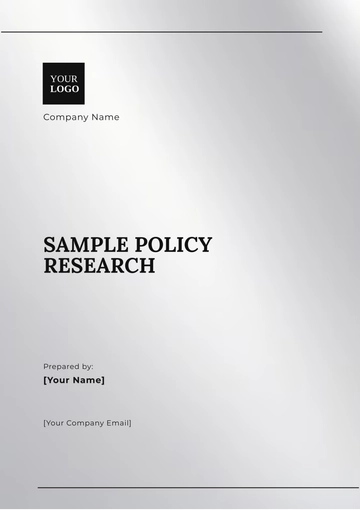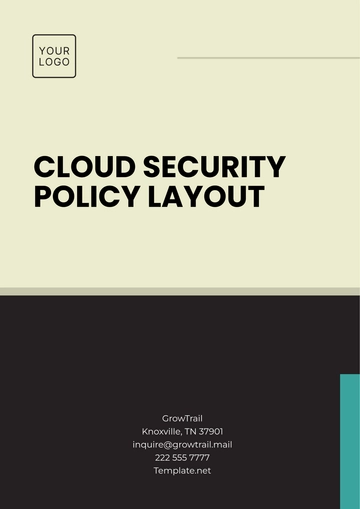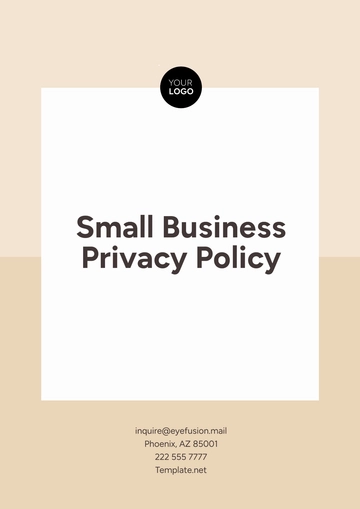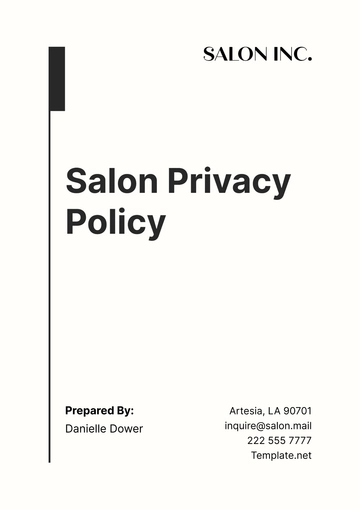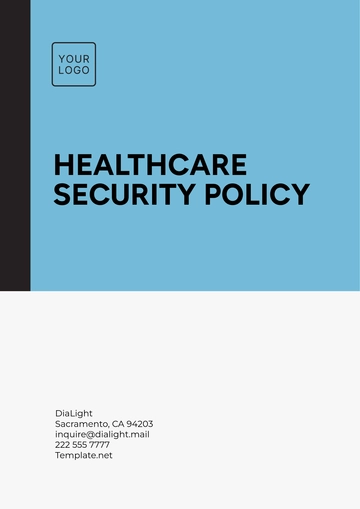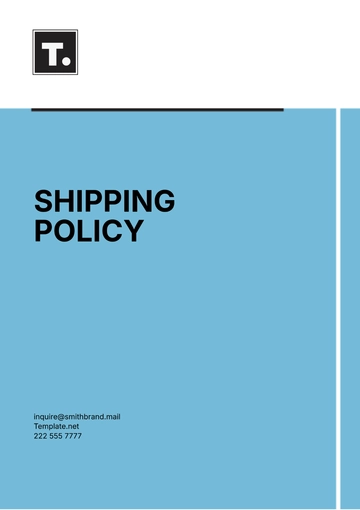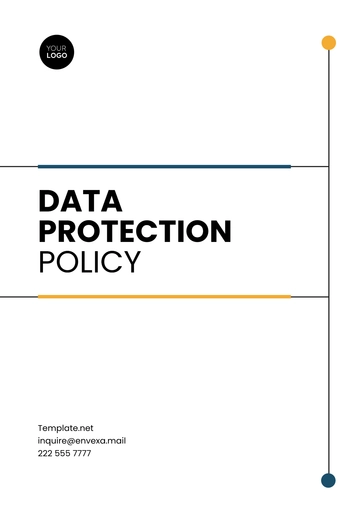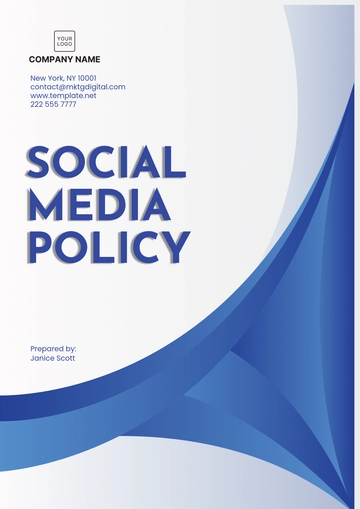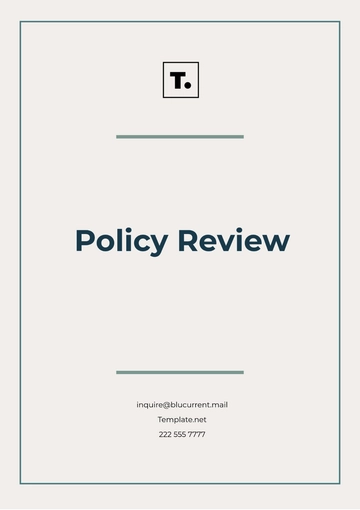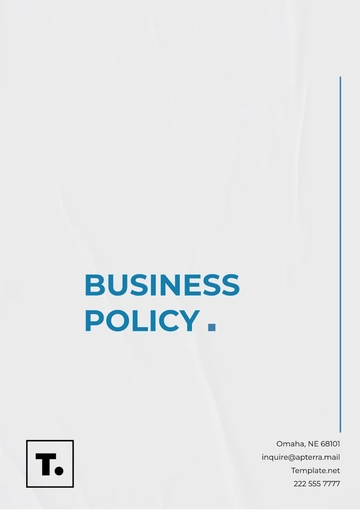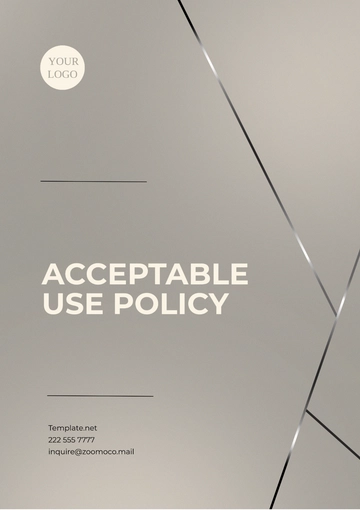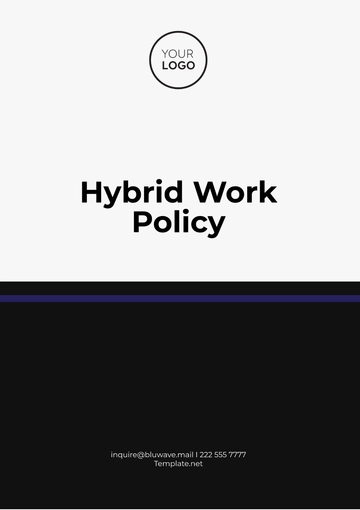Free Cleaning Services Equipment Policy

I. Introduction
A. Purpose
The purpose of this Equipment Policy is to establish clear guidelines for the procurement, use, maintenance, and disposal of cleaning equipment used in our operations. This policy aims to ensure that all equipment is safe, efficient, and effective in meeting the high standards of cleanliness and sanitation that we promise to our clients.
B. Scope
This policy applies to all employees of our company who are involved in the selection, use, maintenance, and disposal of cleaning equipment. It covers all types of cleaning equipment, including, but not limited to, vacuum cleaners, floor polishers, and chemical dispensers used in our cleaning services.
C. Importance of Adherence
Adhering to this Equipment Policy is crucial for maintaining the safety of our employees and clients, ensuring the longevity and reliability of our equipment, and upholding our reputation for excellence in cleaning services. Compliance with this policy helps prevent equipment misuse, minimizes the risk of accidents, and ensures that our cleaning tasks are performed efficiently and effectively.
II. Equipment Procurement
A. Selection Criteria
When selecting cleaning equipment, it is essential to consider several key factors to ensure that our investments are sound, sustainable, and aligned with our operational needs. Our selection criteria include:
Quality and Durability
Is the equipment built to withstand heavy use?
Are replacement parts readily available and cost-effective?
Does the equipment have a warranty or guarantee?
Compliance with Safety Standards
Is the equipment certified by relevant safety standards organizations?
Does it include safety features to protect the user and clients?
Are there any known safety recalls or issues?
Suitability for Intended Cleaning Tasks
Is the equipment designed for the type of cleaning tasks we perform?
Does it enhance the efficiency and effectiveness of our cleaning services?
Can it be easily operated by our staff?
Environmental Impact Considerations
Is the equipment energy-efficient?
Does it minimize water usage?
Are there options for using eco-friendly cleaning agents?
B. Purchase Proposal
Before any equipment purchase, a detailed proposal must be submitted to our management team for review. This proposal should include the equipment's cost, benefits, and alignment with our selection criteria. Approval from management is required before any purchase can proceed, ensuring that all acquisitions are justified and aligned with our operational needs.
C. Preferred Vendors
Selecting the right vendors and procurement channels is essential for acquiring high-quality, reliable equipment at competitive prices. Our preferred vendors are chosen based on their reputation for quality, service, and support.
Vendor Name | Strengths |
High-quality products, extensive warranty | |
Competitive pricing, eco-friendly options, reliable delivery | |
Specialized cleaning equipment, technical support |
D. Budget Considerations
The budget for equipment needs is carefully planned to balance cost with quality and performance. A set percentage of our annual budget is allocated for equipment purchases and maintenance. For the current fiscal year, equipment needs are allocated to not exceed 20% of our operational budget. This ensures that we can invest in the best tools for our work without compromising financial stability. All purchases must be approved by the finance department to ensure they align with our budgetary constraints and company goals.
III. Equipment Use
A. Training
Proper training is vital to ensure the safe and effective use of all cleaning equipment. Our company requires all employees to complete specific training programs tailored to the types of equipment they will be using. This training covers operational procedures, safety protocols, and maintenance basics. Below is a table illustrating the training required for different types of equipment:
Equipment Type | Training Required |
Vacuum Cleaners | Basic operation, safety, and maintenance |
Floor Polishers | Operation techniques, safety precautions, maintenance |
Chemical Dispensers | Proper mixing, application techniques, safety measures |
B. Authorization
Before being authorized to use any piece of equipment, employees must successfully complete the required training and demonstrate their proficiency. The authorization process includes:
Completion of training modules
A practical demonstration of equipment use
A safety comprehension test
The manager or a designated supervisor will grant authorization based on the employee's performance, ensuring that only trained and competent staff operate equipment.
C. Usage in Various Settings
The correct use of equipment varies by setting, requiring specific protocols to ensure safety and effectiveness. Below is a table indicating how to use equipment in different settings:
Equipment | Office Buildings | Residential Homes | Healthcare Facilities |
Vacuum Cleaners | Standard use | Adjust settings | Use HEPA filters |
Floor Polishers | After hours | N/A | Use low-noise models |
Chemical Dispensers | Dilute properly | Use eco-friendly | Follow infection control protocols |
D. PPE Requirements
Personal Protective Equipment (PPE) is mandatory for certain tasks to protect employees from potential hazards. PPE requirements include:
Gloves for handling chemicals
Safety glasses when using high-pressure cleaners
Masks when working in dusty environments or with strong fumes
E. Safety Checks
Conducting safety checks before using any equipment is crucial. A basic checklist includes:
Inspecting cords and plugs for damage
Checking for any loose parts or damage
Ensuring safety guards are in place
Verifying that the equipment is clean and free of obstructions
F. Equipment Malfunction
In the event of equipment malfunction:
Immediately turn off and unplug the equipment
Report the issue to the supervisor without attempting repairs
Tag the equipment as out of service to prevent its use until repaired
G. Handling High-Value Items
When cleaning sensitive or high-value items, special care must be taken. Procedures include:
Using soft cloths and gentle cleaning agents
Avoiding the use of abrasive tools or harsh chemicals
Consulting with a supervisor or client for specific instructions
Documenting the condition of items before and after cleaning
IV. Equipment Cleaning and Storage
A. Cleaning Procedures
To ensure the longevity and optimal performance of our equipment, strict cleaning procedures must be followed after each use. These procedures help prevent the buildup of dirt and grime, which can lead to equipment malfunction or degradation. Specific cleaning steps include:
Disassemble removable parts for individual cleaning.
Wipe down exterior surfaces with a damp cloth to remove dust and debris.
Clean filters or replace them as per the manufacturer’s guidelines.
Sanitize equipment surfaces, especially high-touch areas.
Dry all components thoroughly before reassembly to prevent moisture damage.
B. Storage Guidelines
Proper storage of cleaning equipment is essential to prevent damage and to maintain readiness for the next use. Our storage guidelines ensure that equipment is kept in a safe, organized manner:
Store equipment in a dry, cool place to prevent moisture damage.
Organize equipment on shelves or racks to maximize space and accessibility.
Cover larger equipment with protective sheets to keep dust away.
Label equipment and storage locations for easy identification.
Secure equipment against unauthorized use or theft, especially items that are portable or valuable.
V. Disposal and Replacement
A. End-of-Life Criteria
Determining when equipment has reached its end-of-life is crucial for maintaining operational efficiency and safety. Criteria for deeming equipment as no longer serviceable include:
Frequent malfunctions despite regular maintenance.
Obsolete technology that doesn’t meet current cleaning standards.
Excessive wear and tear that compromises functionality or safety.
Cost of repair exceeds the value or cost of replacement.
B. Replacement Process
When equipment is identified for replacement, the following procedures are followed to ensure a smooth transition:
Assess the need for replacement based on end-of-life criteria.
Select new equipment that meets our current needs.
Dispose of old equipment responsibly.
Train relevant staff on the operation and maintenance of new equipment.
Update inventory records to reflect the change in equipment status.
VI. Policy Enforcement and Compliance
A. Responsibilities of Management
Management plays a crucial role in enforcing this policy, which includes providing training, resources, and oversight to ensure compliance. Responsibilities also involve regularly reviewing and assessing equipment needs, safety standards, and compliance with legal and industry regulations. Management is tasked with fostering a culture of safety and efficiency, where adherence to this policy is a shared priority.
B. Consequences of Non-Compliance
Non-compliance with this equipment policy can result in safety hazards, decreased productivity, and potential legal issues. Consequences for failing to adhere to the policy include corrective actions, retraining, and, in severe cases, disciplinary measures up to and including termination of employment. Our approach aims to correct behavior and maintain the highest standards of operation.
C. Process for Review and Update
This policy is subject to ongoing review and updates to reflect changes in industry standards, legal requirements, and our operational needs. The process includes:
Annual review of the policy by management and safety officers.
Solicitation of feedback from employees.
Incorporation of new technologies and practices.
Communication of updates to all staff, with additional training provided as necessary to ensure compliance with the revised policy.
- 100% Customizable, free editor
- Access 1 Million+ Templates, photo’s & graphics
- Download or share as a template
- Click and replace photos, graphics, text, backgrounds
- Resize, crop, AI write & more
- Access advanced editor
Ensure proper use of equipment with the Cleaning Services Equipment Policy Template from Template.net. This editable and customizable document outlines the correct usage and maintenance of cleaning equipment. Easily editable in our AI Editor tool, it helps maintain high standards of operation and prolongs the life of your equipment, making it an essential policy for any cleaning service.
You may also like
- HR Policy
- Restaurant Policy
- Company Policy
- Accounting Policies and Procedures
- Website Policy
- Privacy Policy
- Safety Policy
- School Policy
- IT and Software Policy
- Law Firm Policy
- Construction Policy
- Interior Design Policy
- Travel Agency Policy
- Education Academic Policy
- Security Policy
- Real Estate Policy
- Expense Policy
- Software Policy
